Annals of Musculoskeletal Medicine
Proposal for an Urgency Score as General Referral Strategy to Second-Care Rheumatology
Mohamed Omar Ghazal and Michael Schirmer*
Cite this as
Ghazal MO, Schirmer M (2017) Proposal for an Urgency Score as General Referral Strategy to Second-Care Rheumatology. Ann Musculoskelet Med 1(1): 001-007. DOI: 10.17352/amm.000001Objectives: To assess the practicability of a questionnaire to routinely discriminate between urgent and non-urgent rheumatology appointments by administrative personnel. Second, to discuss the results in view of current literature on referral strategies of rheumatic patients from primary to secondary care, including those with immune-mediated rheumatic diseases.
Methods: In our rheumatology unit a rheumatology urgency score (RUS) is calculated on the basis of a multi-dimensional questionnaire with five main domains: Administrative information (referral mode, subjective urgency), clinical signs, time of maximal symptom presentation, available laboratory and imaging findings. This RUS has been routinely used by administrative personnel and nurses since July 2013 for assigning appointments at initial consultation, with urgency defined as RUS ≥ 4 points. Anonymous score sheets including the time until appointment assignment were retrospectively analyzed. A literature search was performed with last update in January 2015 to identify previous evidence for effective strategies reducing waiting times and underlying causes for prolonged waiting times.
Results: Consecutive questionnaires from 153 patients were analyzed, with RUS ≥ 4 points considered as urgent for 75% of the patients (n = 115). Based on the bimodal distribution curve of waiting times, the total cut-off between short and long waiting times was defined as 23 days. Mean waiting time for urgent patients was shorter with 14.4 days (±13.1 days), than for non-urgent appointments with 24.6 days (±15.4 days) (p<0.001). 27.5% of all appointments were assigned independently from RUS, with 40.5% of questionnaires with RUS < 4 resulting in a fast appointment and 16.1% of questionnaires with RUS ≥ 4 points resulting in a slow appointment. Without these incorrect assignments, waiting times were shorter for urgent than for non-urgent patients with 8.6 and 38.0 days, respectively (p<0.001). Administrative information, clinical signs, time of maximal symptom presentation, laboratory and imaging findings were available in 99.3%, 94.1%, 77.1%, 33.3%, and 17% of the questionnaires, respectively.
According to the literature, effective strategies resulting in a reduction of referral delay are rapid access services, early arthritis clinics, triage of referrals with use of referral forms and educational programs for primary care physicians. A general strategy for all patients including those with immune-mediated rheumatic diseases like RUS has not been presented so far.
Conclusion: The rheumatology urgency score resulted in a bimodal distribution of waiting times, thus distinguishing between urgent- and non-urgent appointments. To achieve better quality in differentiation of urgent appointments, administrative personnel and nurses have to be further instructed and motivated. In the future, RUS has to be further validated in a prospective approach taking into account the subjective and objective physicians’ feed-back of urgency and final diagnoses.
Introduction
General practitioners (GPs) are considered as gatekeepers and first-line providers for specialized medicine [1,2]. Referring preselected patients to specialists is one of the key tasks of GPs to ensure an optimal clinical care. Only recently, interventions to improve referrals from primary to secondary care have been reviewed by the Cochrane initiative [3]. The authors’ conclusion from seventeen studies (involving 23 different interventions to improve referral practice) is, that both structured referral sheets and active local educational interventions have been shown to be helpful interventions resulting in improved referral quality. Improved referral quality should result in earlier referral of patients with urgent need of an appointment.
From the rheumatological perspective GPs refer patients to secondary care because of severe musculoskeletal symptoms or in suspected inflammatory but non-infectious conditions. For most of these diseases, evidence clearly endorses early treatment to prevent organ damage like erosive and destructive joint disease in rheumatoid arthritis [4,5], or reduce pain to increase life quality. However, referral times from GPs to specialists are often delayed, and even the concept of immediate access clinics as provided for early arthritis by some centers [6], cannot be realized in all clinics and does not necessarily cover the wide range of rheumatic diseases (including inflammatory and non-inflammatory musculoskeletal diseases, vasculitides and other systemic diseases). Overall, long waiting lists in many rheumatic services show that there is a definite need for preselection of urgent patients for early referrals by GPs [7].
Most referrals to rheumatologists were considered appropriate in a UK study in 2005 (94%) [8]. In an Irish study already referral letters and basic investigations helped to prioritize appointments for rheumatology clinics [9], but little is known about easily applicable referral systems to support administrative staff in preselection of rheumatology patients for earlier appointments. Only one unspecific referral strategy used health-related quality of life (HRQoL) as determined by the Rosser Index to distinguish between urgent, ordinary and work disability appointments. Those patients with the lowest HRQoL were more likely referred to secondary care within 3 working days than those with better HRQoL [10] and the authors recommend prioritization of patients with low HRQoL, who may receive more benefit from early access. Other referral strategies cover early arthritis, crystal arthropathies, osteoarthritis and spinal pain syndromes [11], but not the whole spectrum of rheumatic diseases to be referred to a rheumatology specialist clinic.
Since july 2013 a rheumatology urgency score (RUS) as a standardized questionnaire has been used in our rheumatology outpatient unit to support and standardize decisions on urgent appointments by untrained secretaries and nurses of the rheumatology outpatient clinic of the universitary hospital of Innsbruck. The items had been selected earlier by an experienced rheumatologist. The a-priori-validity of a questionnaire was considered superior to lack of any specific training. This retrospective analysis of consecutively collected, but anonymous questionnaires was performed as a quality initiative to get first experiences with such a tool. Second, current literature on referral strategies of rheumatologic patients to a secondary/tertiary care center was summarized to discuss the possible value of the questionnaire in view of current literature on referral strategies of rheumatic patients.
Methods
This is a retrospective analysis of subsequent anonymous questionnaires filled out by medical staff in clinical routine. As such it is considered as a quality assurance initiative, to increase the awareness and optional documentation of facts supporting the referral decisions.
Questionnaire and rheumatology urgency-score
The RUS includes several relevant elements from five main domains: (1) Administrative information, (2) clinical signs, (3) time of maximal symptom presentation, available (4) laboratory and (5) imaging findings. One or 2 urgency points were considered depending on importance of items, and added to the total RUS.
1. Administrative information: Administrative data included the person requesting the appointment (patient, relative or physician) and the request mode (in person or by phone), the kind of referrer/referring physician (self-referred, GP, specialist, outpatient clinic, inpatient clinic or other clinics) and urgency of consultation (normal, urgent or emergency). A maximum of two points was assigned depending on the referrer and subjective urgency, resulting in a possible maximum of four points for administrative elements.
2. Clinical signs: One urgency point was assigned for each of the following clinical signs: Joint swelling, lower back pain (symptom onset before the age of 45), psoriasis, myalgia, severe xerostomia / xerophthalmia, temporal cephalea, jaw claudicatio and oral/genital aphthae. Two points were assigned for uveitis / iritis, colitis or bilateral shoulder girdle pain after the age of 50 years.
3. Time of maximal symptoms’ presentation: One urgency point was assigned for maximal presentation of symptoms in the morning, at night or both in the morning and at night. Other time points were not considered.
4. Laboratory findings if available: Patients were asked for available laboratory findings with a possible maximum of two points assigned for elevated erythrocyte sedimentation rate (ESR), C-reactive protein (CRP), rheumatoid factor (RF) or cyclic-citrullinated peptide antibodies (CCP), presence of human leukocyte antigen B-27 (HLA-B27), antinuclear antibodies (ANA) or anti-neutrophil cytoplasmic antibodies (ANCA).
5. Imaging findings, if available: Only pre-existing x-ray findings compatible with rheumatoid arthritis, articular gout, calcium pyrophosphate dehydrate crystal deposition disease (CPPD), spondyloarthritis including ankylosing spondylitis or vasculitis were assigned with one urgency point. Imaging was not routinely recommended before providing the appointment.
After survey-completion assigned urgency points were summed up resulting in a rheumatology urgency score (RUS) with a possible maximum of 11. Administrative personnel was adviced to give an urgent appointment for patients with four points or more, while the other patients with three points or less should receive appointments within the normal track.
Setting and collection of questionnaire-forms
Referral to urgent appointments was unstructured until the questionnaire was introduced. Using the questionnaire should facilitate the decisions on urgent appointments by untrained secretaries and nurses (Figure 1). Data are inquired personally or by phone at the initial consultation regardless of the contacting person (patient, referring physician, etc.). Questionnaires also include date of performance and date of appointment. All consecutive questionnaires were used for this retrospective analysis.
Data, statistical and ethical considerations
Anonymously used questionnaire forms were provided by administrative staff of the rheumatology outpatient clinic. Evaluators were unaware of diagnoses and patient’s clinical data. Data were collected in an excel file (Microsoft Excel 2013. Redmond, WA: Microsoft) and statistical analyses were performed in SPSS (IBM SPSS Statistics for Windows, Version 20.0. Armonk, NY: IBM Corp). Data were tested for normal distribution using the Shapiro-Wilk test, Mann-Whitney-U test for comparison and Spearman’s rho for correlation of data. If not described differently, all appointments were used for data evaluations.
As this is a retrospective analysis of anonymous questionnaires, the effort was considered as a pure quality initiative. As patients were not directly involved, the local ethics committee was not involved.
Literature search
The search was performed for literature published until 1/2016 using Medline (Pubmed), Pubmed Central and the Cochrane Library databases. The search included following keywords: rheumatol*, outpatient clinic, waiting time and referral delay. Only English literature was screened for, and duplicates were removed. Additional studies were selected if referenced in one of the selected manuscripts.
Results
Administrative characteristics
Questionnaires with score calculations were used by administrative staff of the rheumatology outpatient clinic of the Medical University of Innsbruck for 153 appointments within 9 months (July 2013 to March 2014). Out of these 64.4% (n = 76) of the appointments were requested by patients, 22.0% (n = 26) by clinics or medical practices and 13.6% (n = 16) by relatives (with request data not available for 35 questionnaires). Administrative personnel collected data by phone for 96.3% (n = 77) and 3.8% (n = 3) through personal interviews (with missing data in a total of 73 questionnaires).
Appointments were seeked after referral by GPs in 71.2% (n = 109), by outpatient clinics in 9.2%, by specialists in 8.5%, by self-referral in 6.5% and by other inpatient clinics in 1.3% of the patients. 3.3% of the patients were not assessed. Consultations were reported as urgent in 46.4% (n = 71) and as emergency in 2.6% (n = 4) of patients. Non-urgent consultations were reported in 51.0% (n = 71) including missing data regarding urgency of consultation.
Patients’ history assessed by administrative personnel
Clinical signs, time of maximal symptoms’ presentation, available laboratory findings and imaging findings were indicated in 94.1%, 77.1%, 33.3%, 17.0% of the questionnaires, respectively.
Out of the clinical signs joint swelling was reported in 68% (n = 104), lower back pain or psoriasis in 33.3% (n = 51), uveitis or inflammatory bowel disease in 2.4% (n = 4), myalgia in 25.5% (n = 39), bilateral shoulder girdle pain in 13.1% (n = 20) and at least one of the rare symptoms (including severe xerostomia / xerophthalmia, temporal cephalea, jaw claudicatio or oral / genital aphthae) in 6.5% (n = 10).
Time of maximal symptoms’ presentation were available for 77.1% of the patients. Out of these 23.5% (n = 36) had a maximal symptom presentation in the morning, 12.4% (n = 19) at night and 15.0% (n = 19) both in the morning and at night. 26.2% (n = 40) reported other times of maximal symptom presentation (atypical or the whole day). Maximal symptom presentation was not assessed in 22.9% (n = 35).
Laboratory findings were available for 33.3% (n = 51) of questionnaires. One urgency point was assigned for 17.0% (n = 26) of the patients for pathological findings in ESR (< 40 mm / hour), CRP, RF, anti-ccP, HLA-B27, ANA or ANCA. Two urgency points for an ESR > 40mm / hour were assigned for 1.3% (n = 2) of questionnaires.
X-ray findings were available for 17.0% (n = 26) of the questionnaires. Out of these 9.8% (n = 15) were assigned with one urgency point due to compatibility with rheumatoid arthritis, articular gout, calcium pyrophosphate dehydrate crystal deposition disease (CPPD), spondyloarthropathy including ankylosing spondylitis, or vasculitis.
Score-based two-peaked waiting times for specialists’ appointments
The sum of assigned urgency points resulted in 75.0% of the patients (n = 115) with a calculated RUS of greater or equal four, whereas 25.0% (n = 38) had a score of three or less.
In this setting, RUS had a clear effect on waiting times (Figure 2). Waiting times for urgent and non-urgent appointments were signficantly different (p<0.001). Patients with calculated RUS greater or equal four had a mean waiting time of 14.4 days (±13.1 days), whereas patients with a RUS of three or less had a mean waiting time of 24.6 days (±15.4 days), resulting in a bimodal distribution of waiting times until consultations (missing data for 10 questionnaires, 6.5%) (Figure 2). Based on the bimodal distribution curve of waiting times, the cut-off between short and long waiting times was defined as 23 days. 69.7% (n = 106) of the patients waited shorter than 23 days, and 30.3% (n = 46) of the patients longer than the cut-off. Bimodal waiting time distribution with weekly intervals (and spline interpolation line) showed clearer distribution curves for waiting times of those patients correctly assigned to urgent and nonurgent appointments (n = 111) (Figure 3a) compared to thos curves for waiting times of all patients (n = 153) (Figure 3b).
Taken together, 27.5% of all appointments were assigned independently of RUS. 16.1% (n = 17) of the patients with 3 or less urgency points were falsely given an urgent appointment. Besides, 54.4% (n = 25) of the 46 patients with waiting times longer than 23 days should have been assigned an urgent appointment. Only 83.9% (n = 89) of the 115 patients with urgent appointments had more than 3 urgency points and thus were correctly assigned as urgent. Without these incorrect assignments, waiting times were shorter for urgent than for non-urgent patients with 8.6 ± 5.8 and 38.0 ± 6.3 days, respectively (p<0.001).
Item-specific evaluations of waiting times for specialists’ appointments
The number of RUS points for single pathologic findings was low. Nevertheless, a tendency was observed that patients with specific clinical signs and reported typical positive findings at referral time were assigned earlier appointments. For uveitis/inflammatory bowel disease and for imaging findings, the waiting times are depicted in Figure 4a and 4b. Patients with reported positive imaging findings had a higher calculated RUS (p=0.012) resulting in an urgent appointment. Reported clinical signs of uveitis / iritis or colitis did not show significant differences in RUS. Patients with uveitis / iritis or colitis and reported positive imaging findings had shorter waiting times of 8.8 days and 12.5 days, respectively, compared to all urgent appointments with mean waiting times of 14.4 days and 24.6 days for non-urgent appointments.
Literature search
A total of 12 papers were selected by the literature search performed as outlined in Figure 5. Results are summarized in Table 1. In summary, strategies studied to reduce waiting times for a rheumatological appointment were based on implementation of a unspecific triage system [7], a consultancy program [12] and an immediate access clinic (IAC) [6] or systematic search for reasons responsible for delayed consultations [13-15]. Out of these the rapid access service [6], early arthritis clinic [16], triage of referrals with use of referral forms [7] and educational programs for primary care physicians and health professionals [12] were shown to be effective interventions resulting in reduction of referral delays. Educational programs for the patients, such as informative websites, did not show efficiency [17].
In general, lag of referring time between the initial health care provider and a specialist was more important for the delay of first diagnosis than any delay caused by the patients themselves [13,15]. As contributors for patient-related delay, others identified patient’s ethnicity, age and symptom-associated delay [14,18]. Patients with delayed medical seeking behavior had a gradual onset of symptoms in contrast to patients with earlier consultation with prompt onset of symptoms [16]. Factors associated with prompt consultation are younger age, female sex, patients in higher socioeconomic class and patients with greater comorbidity [19].
Discussion
This study shows that a routinely used questionnaire for referral of unselected rheumatic patients is able to distinguish between urgent and non-urgent initial appointments (with waiting times of 14.1 days and 24.6 days, respectively; p<0.001) (Figure 2 and 3). This reduction of waiting time for an urgent appointment by 10.5 days (= 42.7%) is even better than using a formal triage resulting in reduced waiting times of 6.4 days (= 15.6%) in patients with new-onset inflammatory arthropathies [20-22]. It is important to note, that this approach using a questionnaire addressed not only arthritis but also other rheumatic diseases which have to be considered as “urgent” because of threatening disease complications like in giant cell arteritis or patients with other disease-specific clinical, laboratory and imaging findings. According to published data waiting times for patients with rheumatic diseases are still reported with up to 183 days [19], prompting the development of further strategies like the RUS to reduce waiting times at least for “urgent” patients.
Unfortunately, 27.5 % of appointments were incorrectly assigned, with 40.5% (n= 17) of urgent appointments used for non-urgent patients leading to or at least coinciding with 54.4% (n = 25) of urgent patients assigned to the normal waiting list. Without these incorrect assignments, the waiting times for urgent and non-urgent patients would have been 8.6 and 38.0 days, respectively (p<0.001) (Figure 3b). As our short waiting list is still 2 weeks, further organizational improvements with correct calculation of the score and assignment of urgent and non-urgent appointments will further improve the waiting times for urgent patients. The reason for these false assignments is unclear to us. It can be speculated that the workload of the administrative personnel was too much, or they did not want to rely with their decision on an unevaluated questionnaire and scoring system. Because of the balanced number of available urgent and non-urgent time-slots, correct use of the RUS score in the future should not have any influence on the open slots for urgent appointments in the future.
The initial contact person of patients with an outpatient clinic is usually an employee of the administrative personnel. Although not always complete and correctly calculated, data collection, score calculations and management of appointments were routinely provided by administrative personnel, thus showing the practicability of such a score in daily practice. The rate of falsely assigned appointments should be further reduced, but using the new RUS, the administrative personnel is now able to perform a structured telephone interview, finally deciding about the urgency of the appointment based on facts predefined by rheumatologists. The questionnaire can then be archived in the hospital documentation system to document the decision-process between urgent and non-urgent appointments. Such a tool has not been presented for unspecified rheumatic patients so far, and its further development and improvement with prospective evaluation of its usefulness will provide a practicable tool for the administrative personnel. A questionnaire is cost-efficient, and will allow a predefined process of assigning urgent appointments, which is also easy to document.
In practice, urgency points were assigned more frequently for referral, urgency information and clinical signs than for reported laboratory- and imaging findings. Information regarding laboratory- and imaging findings were available only in 33.3% and 17% of the patients, respectively. The high number of missing data may be a consequence of the freal-life situation of the medical staff when making appontments, but also one could expect that laboratory tests are available more often especially if patients were referred by other physicians or clinical settings as was true in 96.1% of the patients. Therefore we anticipate that the use of electronic health records (EHRs) could provide more complete data not only for future examination by the specialists but already in the referral phase of assigning an urgent appointment. Indeed as a first consequence of this quality initiative, nurses were trained and encouraged to ask for items of the scoring sheet more precisely.
In conclusion, the RUS supports the facilitated and well-documented decision-making for urgent appointments. This pilot study led to several important aspects for further development of the RUS: First, administrative personnel has to be advised to calculate the score correctly and assign urgent appointments depending on RUS. Second, further prospective outcome studies to evaluate the validity of the RUS-questionnaire are warranted. Correcting the influence and weighting of domains and used items will be possible using a larger data set from a prospective trial. Thus RUS may improve the procedural quality in the referral process of unselected rheumatic patients from primary to secondary care, including those with immune-mediated rheumatic diseases.
We thank the administrative personnel of the rheumatology outpatient unit of Clinic II for their cooperation.
Funding
This work was funded by the Medical University of Innsbruck.
- Pedersen KM, Andersen JS, Søndergaard J (2012) General practice and primary health care in Denmark. J Am Board Fam Med 25: S34-38. Link: https://goo.gl/sBka0V
- Höhne A, Jedlitschka K, Hobler D, Landenberger M (2009) [General practitioner-centred health-care in Germany. The general practitioner as gatekeeper]. Gesundheitswes 71:414-422. Link: https://goo.gl/pLOL8I
- Akbari A, Mayhew A, Al-Alawi MA, Grimshaw J, Winkens E, et al. (2008) Interventions to improve outpatient referrals from primary care to secondary care. Cochrane database Syst Rev CD005471. Link: https://goo.gl/mEKLof
- Nell VP, Machold KP, Eberl G, Stamm TA, Uffmann M, et al. (2004) Benefit of very early referral and very early therapy with disease-modifying anti-rheumatic drugs in patients with early rheumatoid arthritis. Rheumatology (Oxford) 43:906-914. Link: https://goo.gl/Ooa4FE
- Quinn MA, Emery P (2003) Window of opportunity in early rheumatoid arthritis: possibility of altering the disease process with early intervention. Clin Exp Rheumatol 21: S154-157. Link: https://goo.gl/WBSH1Q
- Gärtner M, Fabrizii JP, Koban E, Holbik M, Machold LP, et al. (2012) Immediate access rheumatology clinic: efficiency and outcomes. Ann Rheum Dis 71: 363-368. Link: https://goo.gl/SD29t9
- Carpenter T, Katz SJ (2014) Review of a rheumatology triage system: simple, accurate, and effective. Clin Rheumatol 33: 247-252. Link: https://goo.gl/FRd5Ly
- Speed CA, Crisp AJ (2005) Referrals to hospital-based rheumatology and orthopaedic services: seeking direction. Rheumatology (Oxford) 44: 469-471. Link: https://goo.gl/znhlSh
- Murphy CL, Sheane B, Durcan I, O'Shea FD, Doran M, et al. (2013) Benefits of pre-referral preparation for rheumatology clinics. Ir Med J 106: 275-277. Link: https://goo.gl/ONYgMM
- Leon L, Jover JA, Loza E, Zunzunegui MV, Lajas C, et al. (2013) Health-related quality of life as a main determinant of access to rheumatologic care. Rheumatol Int 33: 1797-1804. Link: https://goo.gl/qKKGhp
- Gamez-Nava JI, Gonzalez-Lopez L, Davis P, Suarez-Almazor ME (1998) Referral and diagnosis of common rheumatic diseases by primary care physicians. Br J Rheumatol 37: 1215-1219. Link: https://goo.gl/86cSEy
- Surís X, Cerdà D, Ortiz-Santamaría V, Ponce A, Simón JL, et al. (2007) A rheumatology consultancy program with general practitioners in Catalonia, Spain. J Rheumatol 34: 1328-1331. Link: https://goo.gl/KHw41o
- Raza K, Stack R, Kumar K, Filer A, Detert J, et al. (2011) Delays in assessment of patients with rheumatoid arthritis: variations across Europe. Ann Rheum Dis 70: 1822-1825. Link: https://goo.gl/f84v9d
- Milne V, Kearns R, Harrison A (2014) Patient age, ethnicity and waiting times determine the likelihood of non-attendance at a first specialist rheumatology assessment. Int J Rheum Dis 17: 19-25. Link: https://goo.gl/aWMTRc
- Kumar K, Daley E, Carruthers DM, Situnayake D, Gordon C, et al. (2007) Delay in presentation to primary care physicians is the main reason why patients with rheumatoid arthritis are seen late by rheumatologists. Rheumatology (Oxford) 46: 1438-1440. Link: https://goo.gl/6wSOU5
- Van Nies JAB, Brouwer E, van Gaalen FA, Allaart CF, Huizinga TW, et al. (2013) Improved early identification of arthritis: evaluating the efficacy of Early Arthritis Recognition Clinics. Ann Rheum Dis 72: 1295-1301. Link: https://goo.gl/NpbG5X
- Villeneuve E, Nam JL, Bell MJ, Deighton CM, Felson DT, et al. (2013) A systematic literature review of strategies promoting early referral and reducing delays in the diagnosis and management of inflammatory arthritis. Ann Rheum Dis 72: 13-22. Link: https://goo.gl/Jvr0BC
- Kumar K, Daley E, Khattak F, Buckley CD, Raza K (2010) The influence of ethnicity on the extent of, and reasons underlying, delay in general practitioner consultation in patients with RA. Rheumatology (Oxford) 49: 1005-1012. Link: https://goo.gl/Xab7FE
- Feldman DE, Bernatsky S, Haggerty J, Leffondré K, Tousignant P, et al. (2007) Delay in consultation with specialists for persons with suspected new-onset rheumatoid arthritis: a population-based study. Arthritis Rheum 57: 1419-1425. Link: https://goo.gl/NakUe9
- Cummins LL, Vangaveti V, Roberts LJ (2015) Rheumatoid arthritis referrals and rheumatologist scarcity: a prioritization tool. Arthritis Care Res (Hoboken) 67: 326-331. Link: https://goo.gl/xLmmPF
- Qian J, Ehrmann Feldman D, Bissonauth A, Ménard HA, Panopalis P, et al. (2010) A retrospective review of rheumatology referral wait times within a health centre in Quebec, Canada. Rheumatol Int 30: 705-707. Link: https://goo.gl/GUay6T
- Jack C, Hazel E, Bernatsky S (2012) Something’s missing here: a look at the quality of rheumatology referral letters. Rheumatol Int 32: 1083-1085. Link: https://goo.gl/2I0Fay
Article Alerts
Subscribe to our articles alerts and stay tuned.
 This work is licensed under a Creative Commons Attribution 4.0 International License.
This work is licensed under a Creative Commons Attribution 4.0 International License.
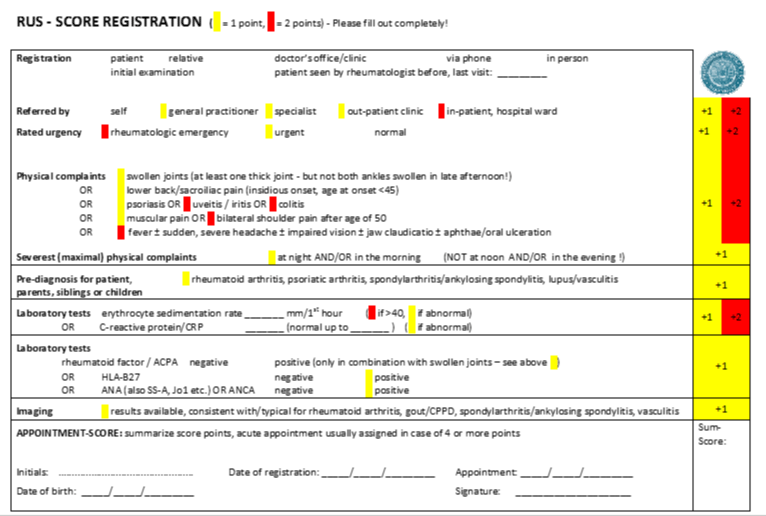
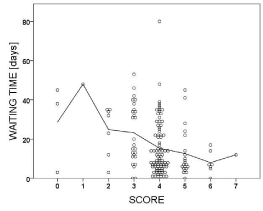
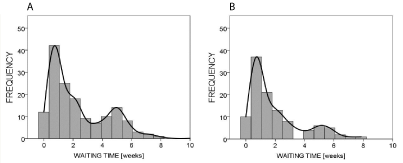
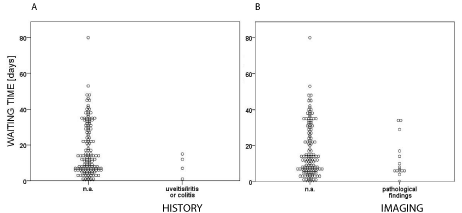
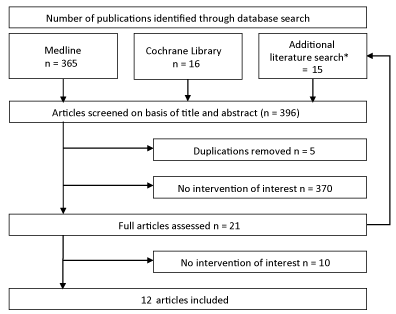

 Save to Mendeley
Save to Mendeley
